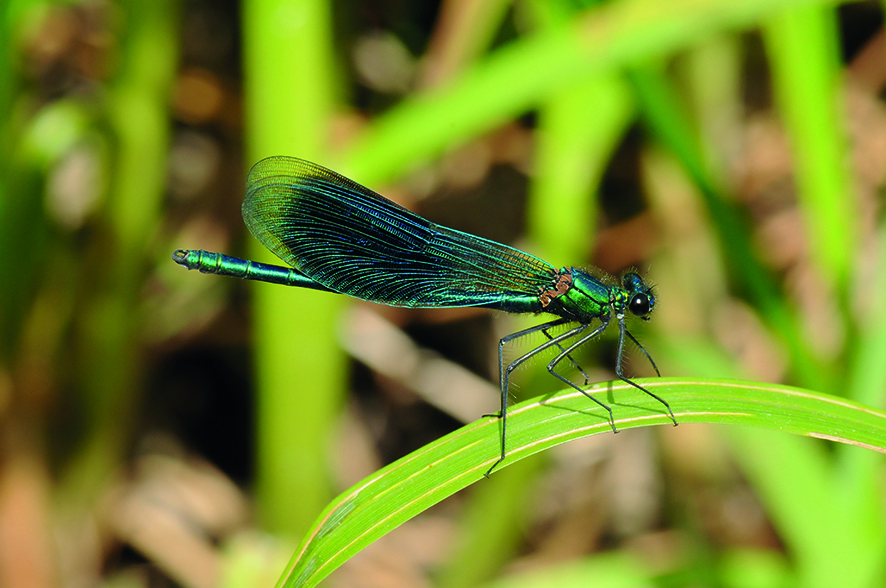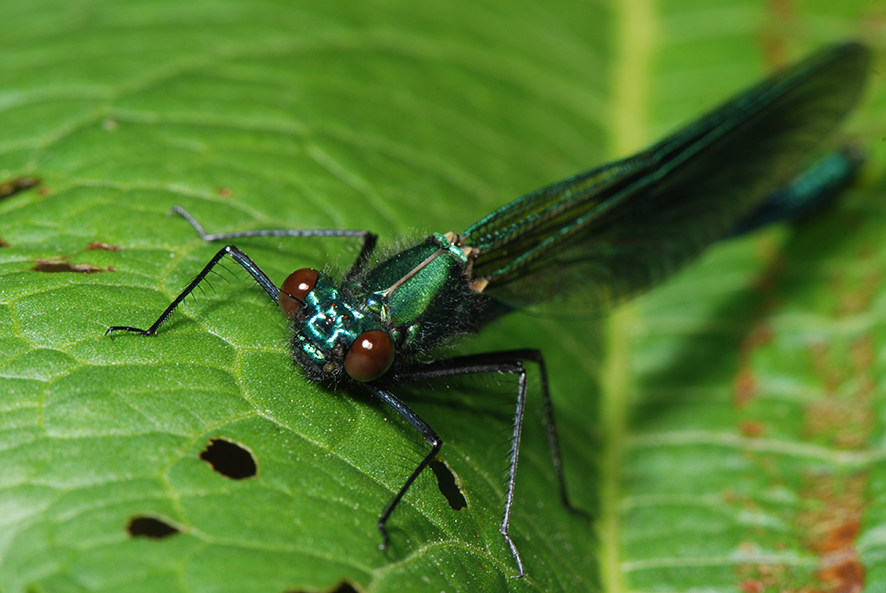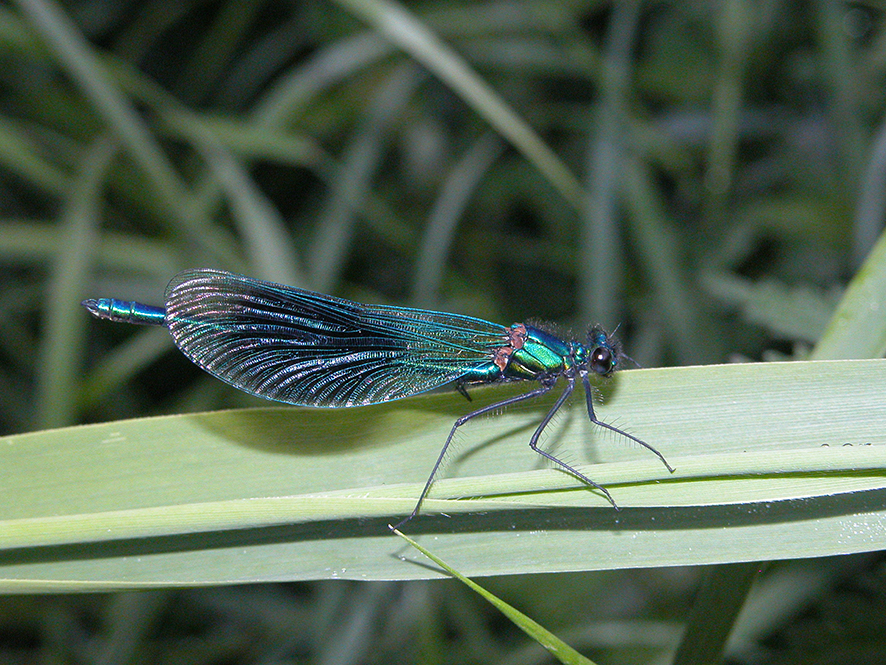Demoiselle agrion
– The most beautiful damselflies
The demoiselle agrion is our largest and most eye-catching species of damsonfly. Damsonflies’ and dragonflies’ beautiful colours consist of two different types: Pigment colours that are found in the cells under the outer skin, and structure colours used in the outer skin. The structure colours in particular give the demoiselle agrion their beautiful shiny metallic green, blue and copper-coloured shades.
The damsonfly males attract the females with a mating dance
In the mating season, the demoiselle agrion defends its territory against invading males. Two males may combat in ritual fights, where the movement and colour of the wings play a key role. If a female comes into the male's territory, he will open his wings and lift the abdomen, making the three outer sections of the abdomen visible.
The colour nuances here can vary greatly from species to species. If the female shows interest, he will perform a special mating dance for her, which is carried out with fast whirring wing beats.

Mating wheel and egg laying
After the mating dance, comes the actual mating, which is carried out by the male grasping the female’s anterior (neck) with his abdomen. Then they fly around like a “tandem” for a while. The female then bends her abdomen up to the front part of the male's abdomen, where the male has placed his semen. Then the pair of them forms a "mating wheel".
Dragonflies can make similar mating wheels in the air, but damselflies usually sit quietly in the vegetation while the mating act takes place. After mating, the male guards the female while she lays her eggs by drilling them into aquatic plants. The eggs hatch in a few weeks, but the larvae can live in the water for two to three years before they metamorphasise into the adult damselfly. The adult damselfly only lives for a few weeks.

Facts
There are two species of demoiselle agrions in Denmark; the beautiful and the banded demoiselle. The male beautiful demoiselle has completely blue metallic shiny wings and the banded demoiselle male has a large blue band going across the wing. The females of both species have transparent wings with a brown or greenish tinge. Both species are 45-48 mm long and have a wingspan of 60-70 mm. The beautiful demoiselle has wider and darker wings and therefore seems larger than the banded demoiselle. Both species live in clean, oxygen-rich watercourses and the banded demoiselle is the more commonly found species by the river Kongeå. They feed on insects and often hunt flying insects such as mayflies and stoneflies.


